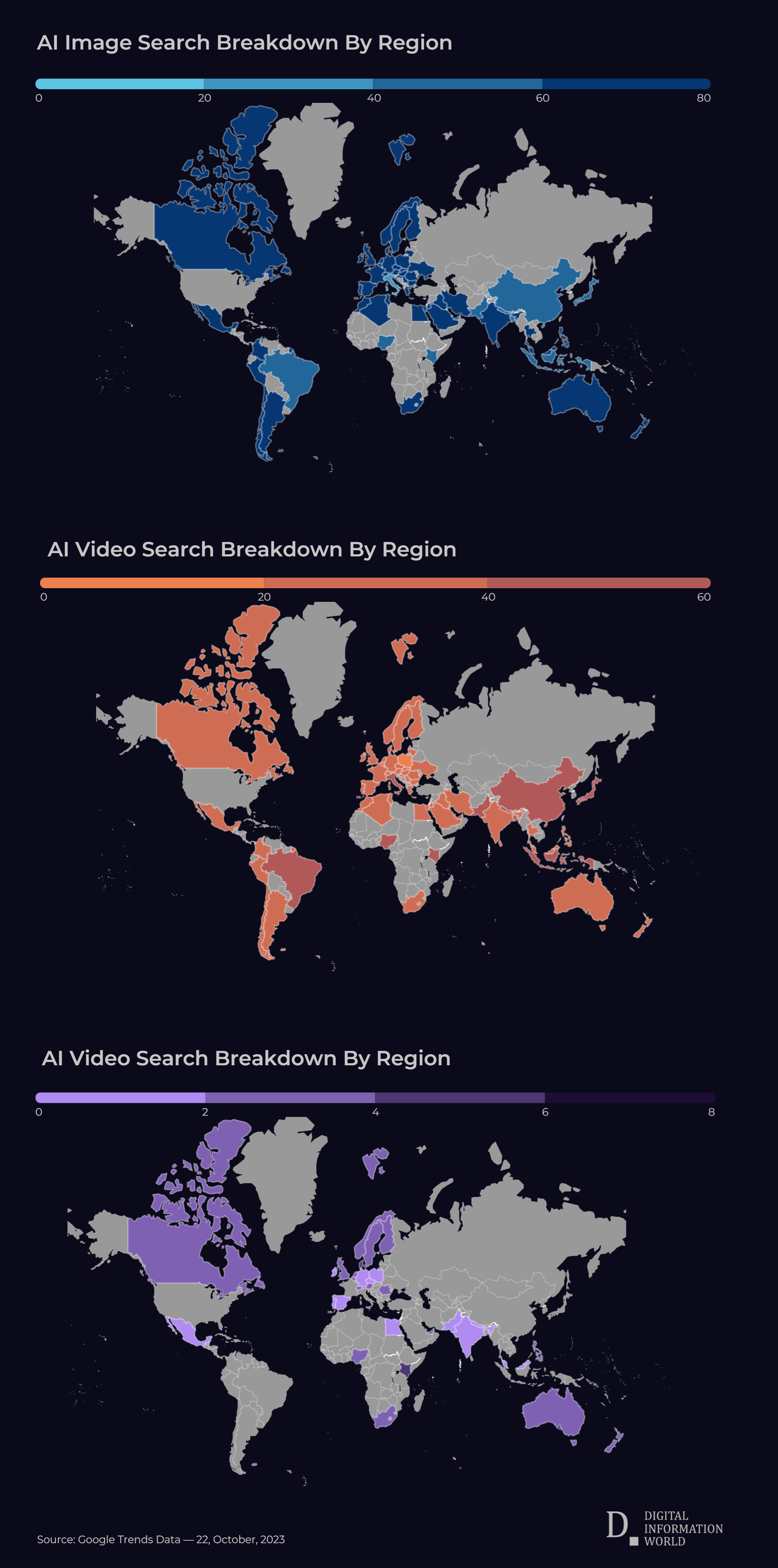In a remarkable turn of events, AI-related search terms have witnessed staggering growth over the past two years, demonstrating the ever-increasing role of artificial intelligence (AI) in our digital lives.
The statistics reveal remarkable progress, with search terms related to AI-powered content experiencing a surge that has left technologists in awe.
Week after week, the numbers have been steadily climbing, reflecting the unstoppable momentum of AI tech across the globe. Whether it's AI images, AI video, or AI written content, the growth percentages have defied expectations and charted a course towards a future where AI is an integral part of our daily existence.
AI Image Searches Skyrocket by 4900%
First on the list is "AI image" searches, which have skyrocketed by a staggering 4900% since September 2021. These searches, which initially stood at a modest 2 points (in terms of popularity), have now reached an astonishing 100 in October 2023. For more context, top searches were "image ai generator" and "ai generator", while "Midjourney" and "Bing ai image generator" were crowned as rising stars. This remarkable increase demonstrates the growing interest of visual AI in our digital world.AI Video Searches Not Far Behind
AI video searches are not far behind, showing an incredible growth rate of 1100%. Starting at just 3 points in September 2021, they have climbed to a substantial 36 points by October 2023. When it comes to rising terms, "Chatgpt", "Pictory" and "Runway ai video" were at the top. This surge reflects the expanding interest in AI-driven video content across various platforms.AI Written Searches Double
AI written searches have more than doubled during this period, with a growth rate of 200%. From an initial value of nearly 0 point in September 2021, they now stand at 2 points in October 2023. When it comes to rising and top terms, a concerning trend emerges, as most searchers appears to be interested in knowing if a particular piece of content is "written by AI" or not.It's important to note that various countries exhibit diverse preferences in their AI-related searches. People in Poland are more interested in knowing about AI created images as the country lead in AI image searches with an impressive 80%, while Vietnam shows strong interest in AI video searches at 74%, leaving all other countries behind. Kenya emerges as a prominent player with a 5% surge in AI written searches (which is highest among all other countries), underscoring its growing focus on AI-generated text.
The impressive growth in these search terms illustrates the evolving landscape of AI technologies. It highlights the increasing reliance on AI for image and video searches, as well as the growing importance of AI in generating written content, which also presents a good opportunity for AI content detection tools. The future of AI continues to hold tremendous potential, and these numbers are a testament to the expanding role of AI in our digital lives.
As we move forward, it will be fascinating to see how these trends continue to evolve and shape the digital world, practically in terms of improving productivity.
Stay tuned for more updates on the rapidly growing world of technology and artificial intelligence.
Read next: IDC's Crystal Ball Reveals GenAI's Magical Ascension
by Irfan Ahmad via Digital Information World














